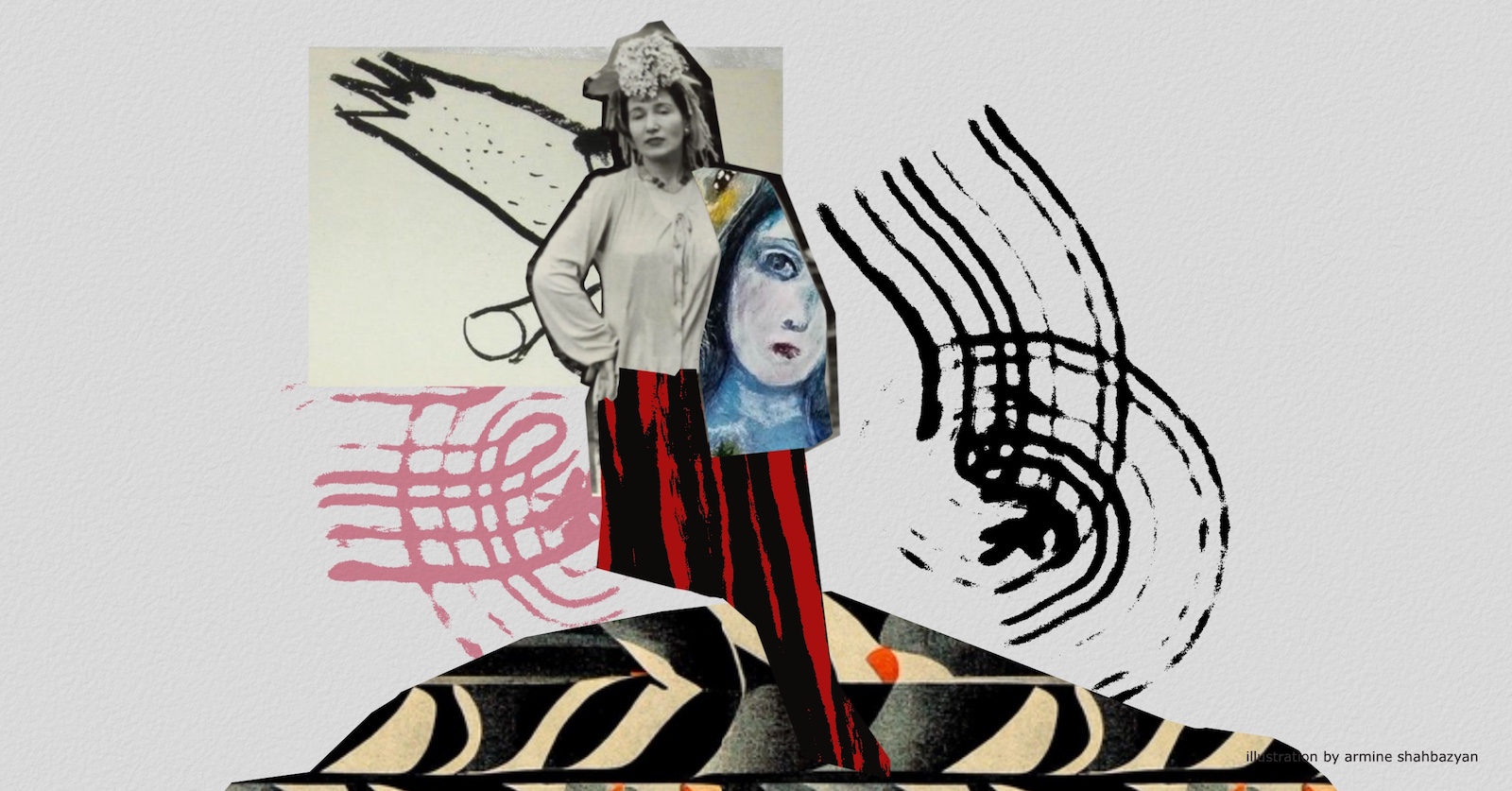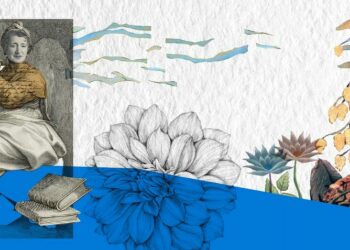
Listen to the article
“Maybe I have a talent. Maybe I should paint.”
“I know, my Vava, I know. But why choose the thorny road?”
Many know Vava Sarkis as a muse and model for French Fauvists Henri Matisse and Raul Dufy. But few know that Vava was a successful artist herself, appreciated by many art connoisseurs around the world.
Born on February 12, 1895 in Trabzon, Turkey, Vava Sarkis (Vardanush Sarian) spent her formative years in Tbilisi, the vibrant artistic hub of the Caucasus. A young and ambitious woman in her twenties, she began taking folk dance and voice lessons at the Tiflis Conservatory. “I was not satisfied, however,” she wrote. “I wanted to do creative work like my husband.”
While pursuing her passion for art, Vava met Sarkis Katchadourian, an accomplished and renowned artist. They married when Vava was just 17, and as she recalled years later, “life began from then on.”
Vava was always an artist, even since childhood with the sound of art ever present in her mind. From being a model for Matisse and Dufy to developing close friendships with notable Armenian writers Hovhannes Tumanyan, Vahan Teryan, Avetik Isahakyan, and many others, Vava remained steadfast in her dream of becoming a successful artist. Despite being surrounded by prominent male figures in the field, Vava was undeterred by the patriarchal structure of the art world at the time. Her resilience paid off, earning her significant recognition among art connoisseurs globally.
Vava’s enduring passion for art found its first expression in 1945 when she painted her first canvas of a flower. Her husband found Vava holding a brush, standing next to the grandiose painting, and he immediately encouraged her to continue. Sarkis Katchadourian was a constant source of support—offering encouragement, critique, and hope, as she noted in an interview. With his unwavering devotion and her dedication, the once thorny road ahead seemed to bloom. Unfortunately, Katchadourian died when Vava was at her artistic peak. However, art became an armor that helped her face life’s difficulties.
In 1946, Vava Sarkis had her first solo exhibition at the American British Art Center in New York. After five months of intensive painting and hard work, she left many critics and art enthusiasts in awe. This was followed by over 25 exhibitions in Paris, Cairo, Beirut, Istanbul, Alexandria, New York, and San Francisco. Leading publications, including Armenian and foreign language papers, praised Vava for her “sensuous” art. A 1958 article from “The Armenian Mirror-Spectator” described the experience: “Rarely does one attend such an enjoyable event as the opening of the exhibition of paintings by Vava Sarkis, of whom it may be said that she qualifies for the title of the most Parisian of Armenians and the most Armenian of Parisians.”[1]
A lover of French Impressionism, Vava Sarkis believed that modern abstract painting would not last because it lacked “heart” in its expressions. “I like revolutionary thoughts and spiritual flights in painting,” she said. “I also believe that these should harmonize with the art of painting, to communicate the sentiments of the artist to the audience; but I wonder, how far these abstract modernists carry this idea.”
To prove her point, Vava created a series of paintings that showcased her innate ability and talent to simplify complex subjects, setting her apart from the intricate style of modernists. Her delightful sense of color relations and her sincere, vivid tones earned her widespread recognition.[2]
Vava disliked imitation in art and believed that authenticity was crucial for any artist. Her work invites viewers to look beyond technical elements like line, perspective, or materiality and to avoid fixating on brushstrokes reminiscent of the Impressionist and Symbolist styles. Instead, she emphasized that the core of her art lies in its unpretentious sincerity, conveyed through the interplay of color, form, and emotional depth. An excerpt from the French publications of L’Aube says, “There is in her paintings the perfumed poetry of legends.”[3]
Vava believed that the most important power any artist should have was confidence. Her artistic confidence led many art enthusiasts and professionals to compare her work to “listening to a sonata that Mozart would have composed in Iran.” Her vibrant and exotic work, with expressive lines and brushstrokes, was often compared to French Post-Impressionist Henri de Toulouse-Lautrec. In a 1949 article, The New York Times wrote, “At times her canvases possess an almost Toulouse-Lautrec feeling and her haunting renditions of women in everyday life definitely suggest Paris.”
Flowers were her theme, her subject. “I’ve always loved flowers since I was a child, and I’ve made dried and shriveled leaves and petals the object of my caress. I put my daily mental experiences into them. After all, our lives are like flowers.”
A 1950 article in the French magazine Le Peintre, writes that Vava Sarkis possessed a deep love for flowers, which she adeptly translated onto canvas through her dynamic, floral-inspired paint application. Her characters embody their own personalities and the intelligence of their creator.[4]
Vava remained devoted to her art until her final days. Following her husband’s death, painting became her companion and source of strength. She passed away from cancer on February 25, 1984, at the age of 89. Her story is one of resilience, enduring passion, and strong individualism. Vava exemplified the spirit of a dedicated Armenian woman, a humanist, and above all, a true believer in her art and creation. As a prominent figure in the artistic field worldwide, she earned admiration and appreciation from many art connoisseurs for her extraordinary work. Her canvases express her individuality, revealing a temperament of exquisite charm and grace.
Footnotes:
[1] The Armenian Mirror-Spectator, 1958, NGA, Memoir and Manuscript Department, Fund 71, Inventory N24306
[2] The dialogue was retrieved from Vava Sarkis’ interview with Mesrob Kermanikian, March 31, 1953, NGA, Memoir and Manuscript Department, Fund 7, Inventory 24306
[3] NGA, Memoir and Manuscript Department, Fund 7, Inventory N28590
[4] Le Peintre, Paris, 1950, NGA, Memoir and Manuscript Department, Fund 71, Inventory
Also see
From the Forgotten Pages of History: Zabelle Boyajian, an Ambassador of Armenian Culture
Born in Diyarbekir but destined to work, create and mingle among the artistic and intellectual circles of London and Europe, Zabelle Boyajian, an artist, writer, translator and British-Armenian intellectual remains a mystery to many.
Read moreFrom the Forgotten Pages of History: Writer Zaruhi Kalemkearian
As one of the first Armenian feminist writers, Zaruhi Kalemkearian left a rich legacy including articles, essays, memoirs and poems. Once a beloved writer widely known in Armenian communities around the world, today, she is remembered by only a few.
Read moreFrom the Forgotten Pages of History: Margarit Babayan, Her Music, Her Passion and Komitas
The young girl, who was almost “killed” by the stunning music of Komitas Vardapet on a beautiful spring day in Tbilisi, was Margarit Babayan, a 28-year-old mezzo-soprano, who later would become a renowned singer and a vocal teacher across Europe, and be remembered as the beloved friend and muse of Komitas Vardapet.
Read more



